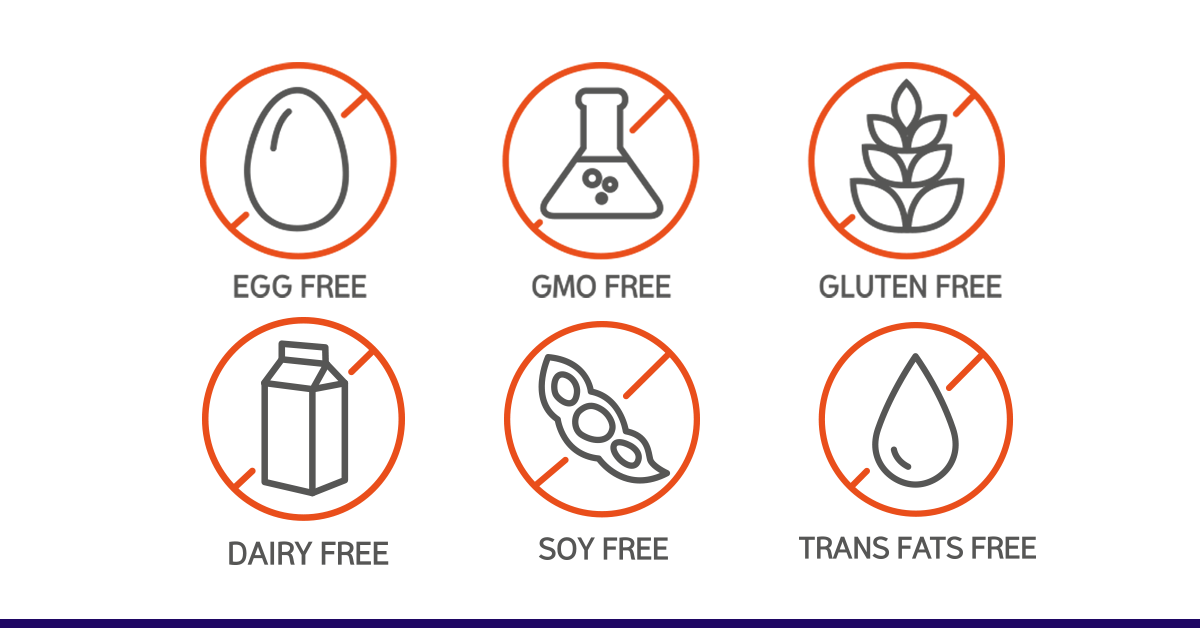
If your stomach hurts after you drink milk or your body reacts negatively to eating nuts, you most likely have a peanut allergy or lactose intolerance. But what makes the two conditions different from each other apart from the trigger foods involved? How do you know whether you have a food intolerance or are simply allergic to it? We provide answers to all that and more in this blog.
An allergy is a reaction to a harmless allergen mediated by the body’s immune system. Like other allergies, a food allergy is simply an allergic reaction to a certain food that it is hypersensitized to. Even a tiny amount of the specific food particle can elicit an overreaction from the body, manifesting as typical allergic symptoms like hives, digestive problems, or swollen airways. Sometimes, it may even result in anaphylaxis – a body-wide allergic reaction that can lead to death.
The major reported food allergens are milk, egg, peanuts, wheat, fish, and crustacean shellfish, with shellfish being the most common food allergen in the U.S. According to Food Allergy Research & Education (FARE), an estimated 32 million Americans suffer from food allergies.
Most food allergies like milk, egg, wheat, and soy can be outgrown throughout childhood; however, children appear to be outgrowing them slower compared to the previous decades. Peanut, shellfish, and fish allergies are usually lifelong.
Currently, allergies are incurable. The primary method to tackle the problem, in this case, is to manage the allergy. Early on, parents or physicians can identify the food allergen and make a special effort to recognize and steer their child clear from foods containing the allergen.
While a food allergy is an immune-mediated reaction, food intolerance is usually a gastrointestinal (GI) response. In this condition, the GI tract is unable to digest certain foods. Hence, a GI upset is commonly felt after eating foods you may be intolerant to. This is rarely ever a dangerous situation or fatal.
You may be able to intake food that you are intolerant to in small amounts without triggering a reaction. Moreover, food intolerance can be managed without totally avoiding the offending food.
Key differences between food intolerance and allergy
Although some symptoms of food intolerance and allergy are similar, you should be aware of some notable factors unique to food intolerance.
Bloating linked to food intolerance is one of the most common symptoms and can affect the quality of your life. It is associated with stomach pain, discomfort, and gas. It may also make your stomach appear larger due to the accumulation of excess gasses.
However, some of these are also true for food allergies. It is important to note that allergies have some characteristically different symptoms like:
If you or your child experience any of these symptoms, seek medical assistance immediately for a professional diagnosis.

You know by now that food intolerance is linked to the GI system. Any defects, abnormalities, or enzyme deficiency in the GI tract will cause food intolerance. Some causes of food intolerance are:
One of the most common food intolerances in the U.S. is lactose intolerance. Lactose is a sugar present in milk broken down by the enzyme lactase. Because of the absence of lactase in the digestive system, milk products cannot be broken down, resulting in lactose malabsorption.
When these sugars are not absorbed, they are excessively present in the large intestine and promote bacterial growth. This, in turn, causes flatulence and diarrhea.
Transporter molecule deficiency can also be a factor in the malabsorption of certain foods. Even if the appropriate enzymes are present to break down the food, food can not be transported from the intestines to the bloodstream without the appropriate transporter molecules. These molecules are metabolized in the large intestine, where bacterial fermentation produces gasses like carbon dioxide and methane. Abdominal pain, diarrhea, flatulence, and bloating are the result.
Your body might associate stress with some foods and overreact to their intake. The exact mechanism behind this is not known. However, it does hint towards a brain-gut connection.
Chemical ingredients added to provide color, enhance the taste, or preserve foods can also trigger a digestive response. These include artificial sweeteners, dyes, MSG sulfites, etc.
Sometimes you may feel indigestion over a prolonged period but may not pinpoint the root cause of the symptoms. You can practice an elimination diet by cutting out a specific food for a certain period until the symptoms subside. Some of the most common foods that cause intolerance symptoms are mentioned below, so avoiding these might be a good starting point.
You can take some precautionary steps to prevent the undesirable symptoms of food intolerance.
Some intolerances are manageable. For example, you can drink lactose-free milk instead of avoiding milk altogether if you are lactose intolerant. For symptoms like heartburn or stomachache, you can take antacid medication.
See Also: What Foods Should I Avoid If I Have A Latex Allergy?
By now, you should know that food intolerance and allergy are two widely different conditions with distinguishable manifestations. If you feel any of the symptoms above, especially those of an allergic reaction, you should consult your physician. Food intolerance isn’t a serious problem but can be inconvenient.